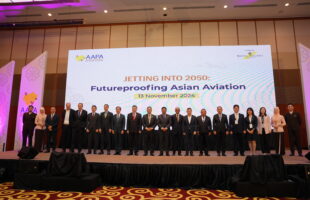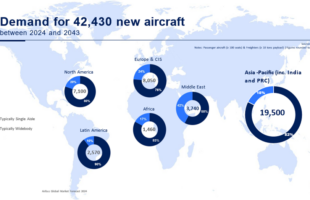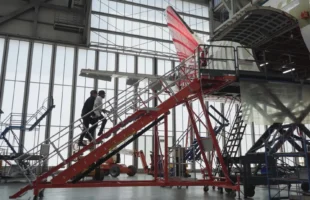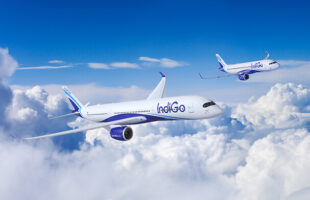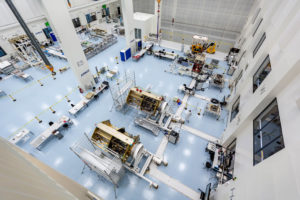 Airbus’ Friedrichshafen site has opened Europe’s most state-of-the-art satellite integration and space technology centre, known as the Integrated Technology Centre (ITC). The ITC, which triples the area of clean room space to 4,200 m2, is dedicated to building satellites, probes, space instruments and experimental technologies. The centre took only two years to build at a total cost of approximately €45 million.
Airbus’ Friedrichshafen site has opened Europe’s most state-of-the-art satellite integration and space technology centre, known as the Integrated Technology Centre (ITC). The ITC, which triples the area of clean room space to 4,200 m2, is dedicated to building satellites, probes, space instruments and experimental technologies. The centre took only two years to build at a total cost of approximately €45 million.
With dimensions of 70 x 60 metres and a ceiling height of up to 18.50 metres, the building was designed to expand the current satellite integration hall. The new ‘dual’ complex enables projects to be executed more efficiently and economically and, thanks to cutting-edge technology and its new size, also offers new possibilities for developing future space projects, such as large space telescopes.
The centrepiece of the ITC is its large clean room. The final integration of the satellites takes place under clean room conditions of various ‘cleanliness classes’ (from ISO 8 to ISO 5) in facilities totalling approximately 2,100 m2, of which 400 m2 are dedicated to ISO 5. Extensive air conditioning and filter systems circulate an air volume of 900,000 m3 up to 60 times an hour, which not only ensures the required levels of cleanliness but also a consistently elevated air pressure, in addition to controlling humidity and temperature.
Four seismic blocks, each weighing 150 tonnes, ‘decouple’ special integration tables from the building and ensure a completely vibration-free environment for the installation of optical instruments. A computer-controlled fan and filter matrix on the south side of the clean room generates air-flow profiles that can be adjusted to the occupancy of the room. This concept allows different clean room classes to be created in a single hall with no disruptive partitions or curtains.
In the adjacent check-out rooms, technicians can conduct a broad array of electrical function tests without having to enter the clean room area. All computer systems are housed in their own air-conditioned, noise-insulated racks.
The two wings of the ITC provide a further 1,100 m2 of integration and laboratory space for component manufacturing and technical areas. The first floor of the building’s west wing houses a conference zone and a multifunctional showroom and information space, whose large panoramic windows provide a unique view of the flight hardware production process.
Four Sentinel satellites for the European environment and security programme ‘Copernicus’, the joint European-Japanese EarthCARE Earth observation satellites and two 12.30-metre-long planar radar antennas are the first projects to move into the new centre. The integration work for JUICE, a mission to the icy moons of Jupiter (set to launch in 2022), is also expected to start within the next six months.



